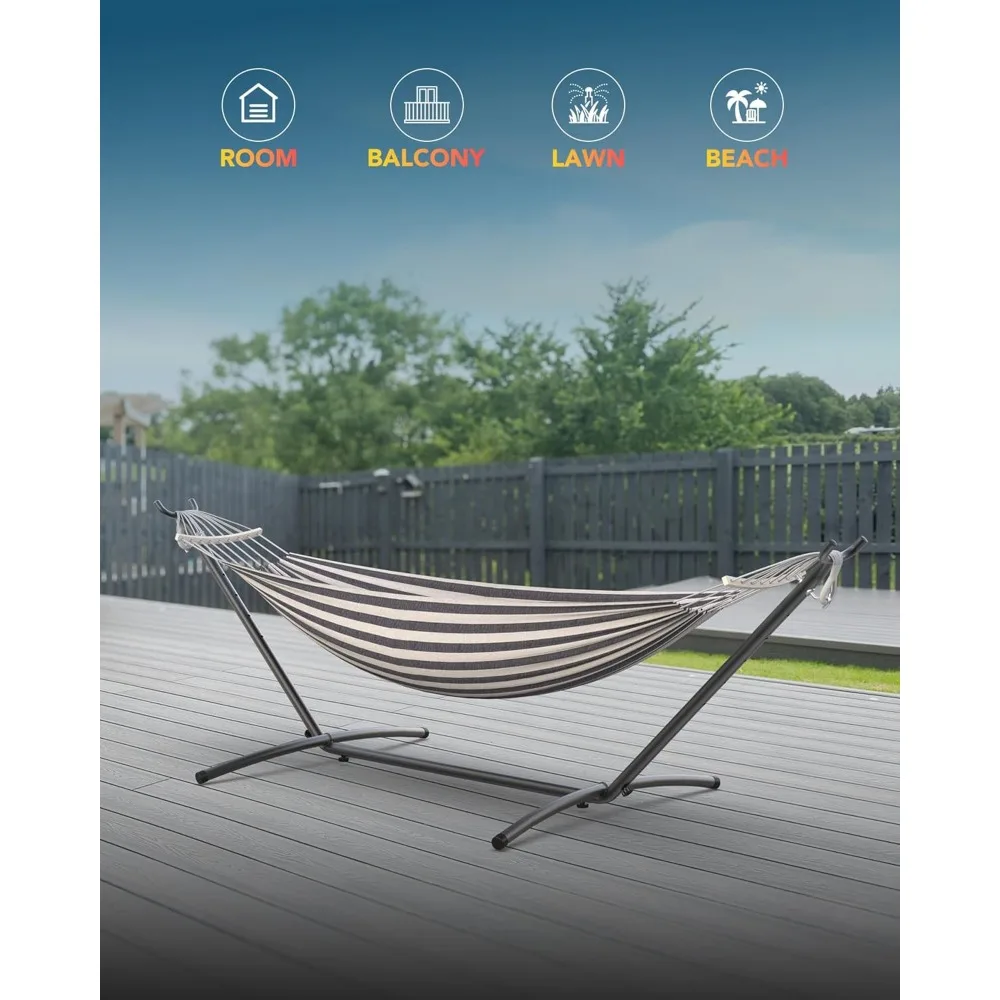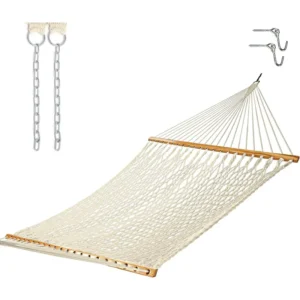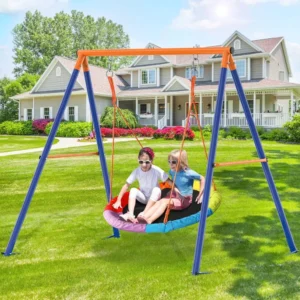Introduction
When it comes to relaxing in a hammock, safety should always come first. Understanding how much weight your hammock floor can support is crucial for preventing accidents and ensuring a worry-free relaxation experience. The term “hammock floor” actually refers to two distinct products: portable hammocks that you might use for camping or in your backyard, and architectural hammock floors (also called loft nets) that are permanently installed in homes or recreational spaces.
Both types have specific weight limits determined by their materials, construction methods, and suspension systems. Exceeding these limits isn’t just bad for the product—it can be dangerous for users. A hammock that fails under too much weight can cause serious injuries from unexpected falls.
In this comprehensive guide, we’ll explore the weight capacities of both portable hammocks and architectural hammock floors, helping you understand the hammock weight capacity guidelines that keep you safe while you relax. Whether you’re shopping for a new hammock or wondering if your current setup can handle additional weight, this information will help you make informed decisions about your comfort and safety.
Understanding Hammock Floor Types: Two Distinct Categories
Before diving into specific weight capacities, it’s important to understand that “hammock floor” can refer to two very different products with distinct purposes and weight considerations.
Portable Hammocks
Portable hammocks are temporary structures designed for relaxation or sleeping that can be set up and taken down as needed. These include:
- Camping hammocks: Lightweight, often made from nylon or polyester
- Brazilian hammocks: Traditional cotton designs with fringe
- Mayan hammocks: Woven string hammocks known for comfort
- Spreader bar hammocks: Featuring wooden bars that keep the hammock flat
- Hammock chairs: Suspended seated designs
These hammocks are typically used for camping, backyard relaxation, or indoor use. Their portability makes them versatile, but also means they have specific weight limitations that must be respected for safe use.
Architectural Hammock Floors (Loft Nets)
Architectural hammock floors or loft nets are permanently installed net structures that create usable suspended floors in homes, adventure parks, or as unique design features. Unlike portable hammocks, these installations:
- Are fixed in place
- Cover a larger area
- Require professional design and installation
- Must integrate with the building’s structure
- Often support multiple people simultaneously
Understanding the fundamental differences between these two categories is essential when considering hammock weight support guide information, as their construction, materials, and intended use significantly impact how much weight they can safely hold.
Weight Capacities of Portable Hammocks
The golden rule when it comes to portable hammocks is simple: always check the manufacturer’s specifications first. While general guidelines exist, the exact weight capacity of your specific hammock should be your primary reference point. That said, here are the typical weight capacities you can expect for different types of portable hammocks:
- Single hammocks: 200-300 pounds (90-135 kg)
- Double hammocks: 400-500 pounds (180-225 kg)
- Camping/backpacking hammocks: 250-700 pounds (113-317 kg) depending on model
- Hammock chairs: 250-300 pounds (113-136 kg)
- Hammock tents: 285-500 pounds (130-225 kg) depending on size
Premium models often exceed these ranges, with some heavy-duty options supporting up to 700 pounds (317 kg). Meanwhile, ultralight backpacking hammocks might prioritize weight savings over maximum capacity, though most still support at least 250 pounds.
For heavier individuals, it’s particularly important to look for hammocks with reinforced designs, extra stitching at stress points, and clearly stated higher weight capacities. Understanding how much weight can hammock hold is critical for both comfort and safety.
Many of our customers find that our heavy-duty hammock sets provide the peace of mind they need when standard capacities feel too limiting. Remember that these weight ratings typically include a safety margin, but it’s never wise to test those limits.
Weight Capacities of Architectural Hammock Floors (Loft Nets)
When it comes to architectural hammock floors or loft nets, weight capacity is measured differently than for portable hammocks. These installations require professional design and installation because they must safely support significant distributed weight over a larger area.
The weight capacity for these structures is typically expressed in two ways:
- Distributed load (per unit area): 20-45 lbs/sqft (100-210 kg/m²)
- Maximum total load: 500-1000 kg (1100-2200 lbs) depending on design
The fixation points where the net attaches to the supporting structure are crucial to the overall strength. Each anchor point is typically rated to support around 200 kg (440 lbs) of pulling force. This is why professional installation is non-negotiable for these types of hammock floors.
The size of the net affects how weight is distributed. Larger nets need to distribute weight differently than smaller installations, which impacts the overall capacity. For specialized applications, high-resistance nets can support over 700 kg/m², but these require specific engineering considerations.
Before installing any type of suspended floor in your home, you should understand whether your ceiling can support hammock weight. This usually requires consultation with a structural engineer who can assess your specific building structure.
Critical Factors That Determine Weight Capacity
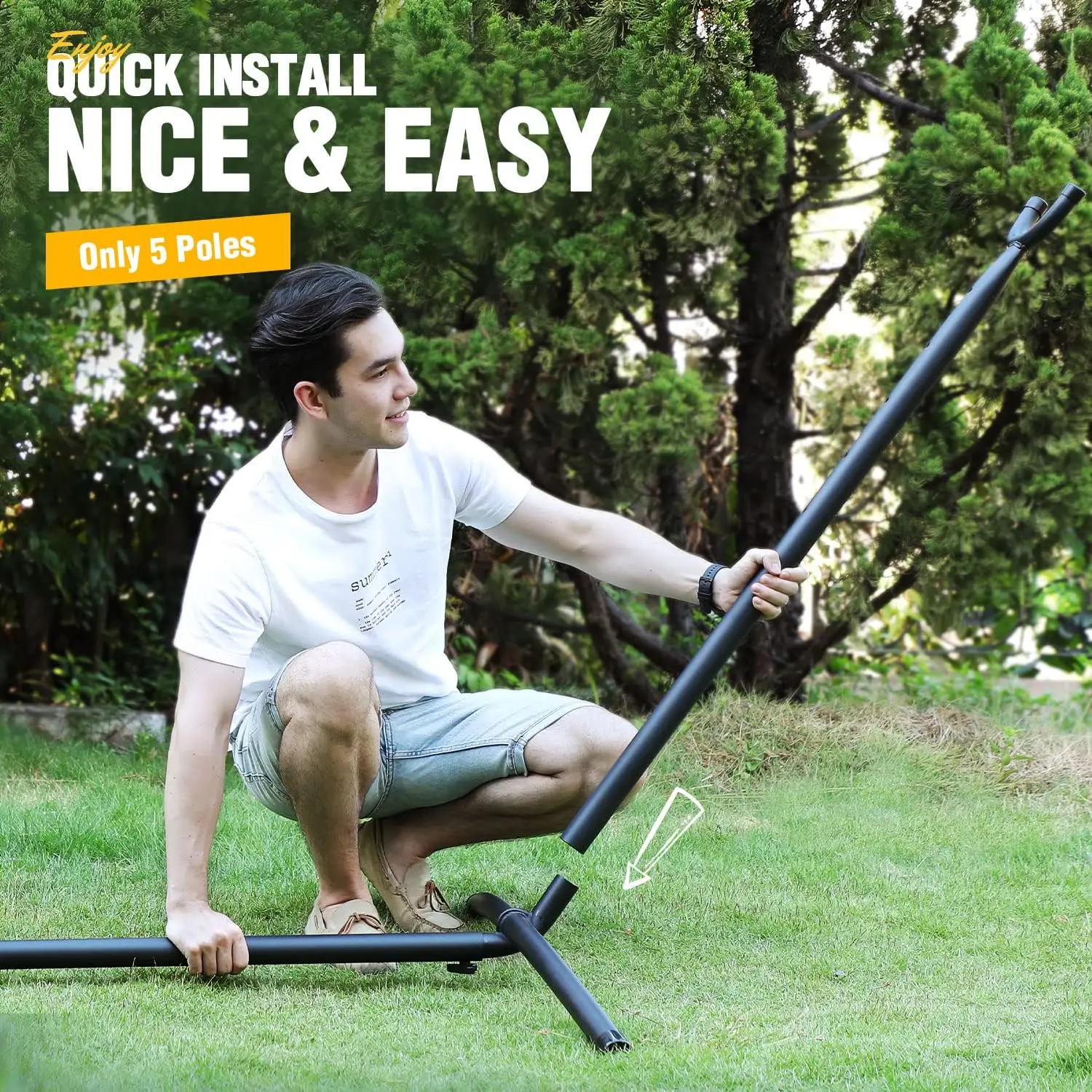
Several key factors determine how much weight a hammock or hammock floor can safely support:
Materials
For portable hammocks, material choice significantly impacts strength:
– Ripstop nylon offers excellent strength-to-weight ratio
– Parachute nylon provides good durability with moderate weight
– Polyester resists stretching and UV damage better than nylon
– Cotton is comfortable but typically supports less weight than synthetic materials
For architectural nets, specialized materials like high-strength polyester, polypropylene, or advanced options like Dyneema® (UHMWPE) are used. The thickness of materials, often measured in denier for fabrics, directly correlates with strength—higher numbers generally indicate stronger materials.
Construction Quality
For portable hammocks, key construction elements include:
– Reinforced stitching at stress points
– Bar tacking (dense stitching) at critical junctions
– End-loop construction that distributes force evenly
For architectural nets, construction considerations include:
– Mesh size and pattern that optimizes strength
– Border reinforcement that prevents edge stretching
– Engineering that ensures proper load distribution
Suspension Systems (Portable Hammocks)
The components that connect your hammock to its anchor points are just as important as the hammock itself:
– Straps should have appropriate width to distribute force
– Carabiners and other hardware should be properly rated
– Ropes need sufficient diameter and material strength
Installation & Anchorage
For portable hammocks:
– Proper hang angle (typically 30°) maximizes comfort and minimizes stress
– Anchor points need to be strong and stable
For architectural nets:
– Professional installation ensures proper tension distribution
– Supporting frame must be engineered for the expected load
The relationship between hammock material vs. weight capacity is particularly important to understand when shopping for hammocks. Our double two-person hammock sets are designed with these factors in mind, using quality materials and construction techniques to ensure adequate weight support.
Safety First: The Dangers of Exceeding Weight Limits
Ignoring the manufacturer’s stated weight capacity isn’t just risky—it can be dangerous. When a hammock is loaded beyond its limits, several problems can occur:
- Material failure: Fabrics can tear or rip suddenly
- Suspension/anchorage failure: Straps, ropes, or carabiners can break
- Injuries from falls: When hammocks fail, users fall unexpectedly, often from height
- Property damage: Failed hammocks can damage surrounding objects or structures
It’s important to understand the difference between static and dynamic loads. Static load refers to the weight of stationary occupants, while dynamic load includes forces from movement, bouncing, or swinging. Dynamic loads can significantly exceed static weight—sometimes doubling or tripling the effective force on the hammock.
The manufacturer’s stated capacity should always be your final authority. Most reputable companies test their products thoroughly and provide conservative weight limits that include safety margins.
Regular inspection of your hammock is essential for ongoing safety. Look for signs of wear like fraying fabric, stretched stitching, or deformation of hardware. When in doubt about understanding safe hammock weight limits, it’s better to err on the side of caution.
How to Choose the Right Hammock for Your Weight Needs
Selecting a hammock with the right weight capacity involves a thoughtful approach:
Assess intended users:
– Will it be used by one person or multiple people?
– What is the weight of the heaviest intended user?Consider activity level:
– Relaxing with minimal movement requires less capacity
– Active movement or entry/exit creates higher dynamic loadsAdd a safety buffer:
– Always select a hammock rated for at least 20-30% more than your expected load
– This provides margin for unexpected forces and material aging
For portable hammocks, carefully read manufacturer specifications, looking beyond marketing claims to find actual tested weight limits. For architectural hammock floors, professional assessment is non-negotiable. This includes ensuring structural support adequacy and compliance with local building codes.
If you’re a heavier individual, specialized products exist to meet your needs. Our guide for hammocks for heavier individuals provides targeted advice for finding comfortable, safe options. For outdoor use, our camping hammocks with stands collection includes options with clearly specified weight capacities for various uses.
Testing and Certification: How Manufacturers Determine Weight Limits

Have you ever wondered how manufacturers arrive at the weight capacities printed on hammock packaging? The process is more scientific than you might think:
Hammock weight ratings are typically determined through a series of controlled tests:
- Static load testing: Gradually increasing weight until failure occurs
- Safety factor application: Rating the hammock below its actual breaking point
- Durability testing: Repeated loading and unloading to test longevity
Reputable manufacturers tend to be conservative with their ratings. For example, a hammock might be tested to support 450 pounds before showing signs of stress, but receive an official rating of 300 pounds. This safety margin helps account for real-world variables like uneven weight distribution, dynamic forces, and material aging.
Testing often involves thousands of loading cycles to simulate extended use over time. This helps manufacturers understand not just what weight will cause immediate failure, but how repeated use affects the hammock’s strength.
When shopping for hammocks, especially for weight-critical applications, looking for products from established brands with transparent testing methods can provide extra peace of mind.
Special Considerations for Different Uses
For Camping/Hiking
When using hammocks in outdoor settings, you’ll need to balance weight capacity needs with portability. Backpackers might prioritize ultralight options, while car campers might prefer sturdier designs with higher capacities. Remember that uneven terrain can create additional stress on hammock suspension systems, potentially reducing effective weight capacity.
For Family Use
Family hammocks need to accommodate multiple users safely. Remember that a hammock “rated for two people” doesn’t always mean two adults—check the specific weight rating. For families with children, establish clear rules about maximum occupancy and proper use to prevent overloading.
For Indoor Installation
Indoor hammock installation presents unique weight considerations. Wall and ceiling attachments must be secured to structural elements like studs or joists, not just drywall or plaster. Understanding whether it’s safe to hang hammock indoors requires knowledge of your home’s structure.
For Long-Term Use
Weight capacity can change over time as materials age and stretch. Regular inspection and maintenance help preserve a hammock’s ability to support weight safely. Replace hammocks showing signs of significant wear, even if they haven’t completely failed. Our portable hammocks with stands are designed with durability in mind, but even the best products require proper care.
A-Frame Stand Hammock Sets, Swinging Hammock Chair Sets
$154.62 Select options This product has multiple variants. The options may be chosen on the product pageCamping Hammock Sets with Bug Net, Ultralight Camping Hammock Sets
$139.72 Select options This product has multiple variants. The options may be chosen on the product pageClassic Wooden Stand Hammock Sets, Heavy Duty Hammock Sets
$1,061.68 Select options This product has multiple variants. The options may be chosen on the product pageHammock Sets with Canopy, Heavy Duty Hammock Sets
$286.31 Select options This product has multiple variants. The options may be chosen on the product pageDouble / Two Person Hammock Sets, Rope Hammock Sets
Double Traditional Cotton Rope Hammock with Extension Chains – 450 lbs Capacity for Backyard & Patio$292.98 Select options This product has multiple variants. The options may be chosen on the product pageFolding Hammock Sets, Quick Setup Hammock Sets
Price range: $305.52 through $583.27 Select options This product has multiple variants. The options may be chosen on the product page
Frequently Asked Questions
What happens if I slightly exceed the weight limit?
Even slightly exceeding the weight limit can cause invisible damage to your hammock. The materials may stretch beyond their recovery point, weakening the overall structure. This might not cause immediate failure but could significantly reduce the hammock’s lifespan and make it prone to unexpected breaking later.
How accurate are manufacturer weight ratings?
Reputable manufacturers typically use conservative estimates with built-in safety margins. This means a hammock rated for 300 pounds might actually support more in testing conditions, but the lower rating accounts for real-world variables and long-term use.
Can I increase my hammock’s weight capacity?
Modifications to increase weight capacity aren’t generally recommended for safety reasons. The original design has been tested as a complete system. Instead, it’s safer to purchase a hammock specifically rated for your weight needs.
Does the hanging angle affect weight capacity?
Yes, improper hanging can effectively reduce safe operational load. The ideal hammock angle (about 30 degrees from horizontal) distributes weight optimally. Hanging too flat increases tension on the suspension system and fabric, while hanging too steeply creates uncomfortable pressure points and can destabilize the hammock.
Do weather conditions affect weight capacity?
Yes, moisture and UV exposure can degrade materials over time, potentially reducing weight capacity. Synthetic materials like nylon can absorb water, temporarily weakening them, while prolonged sun exposure breaks down fibers in all materials.
How do I know if my walls/ceiling can support a hammock?
For indoor installations, consult with a structural professional who can assess your specific situation. Generally, hammocks should only be attached to structural elements like studs, joists, or beams—never to drywall, plaster, or other non-structural materials.
Expert Tips for Maximizing Safety and Longevity
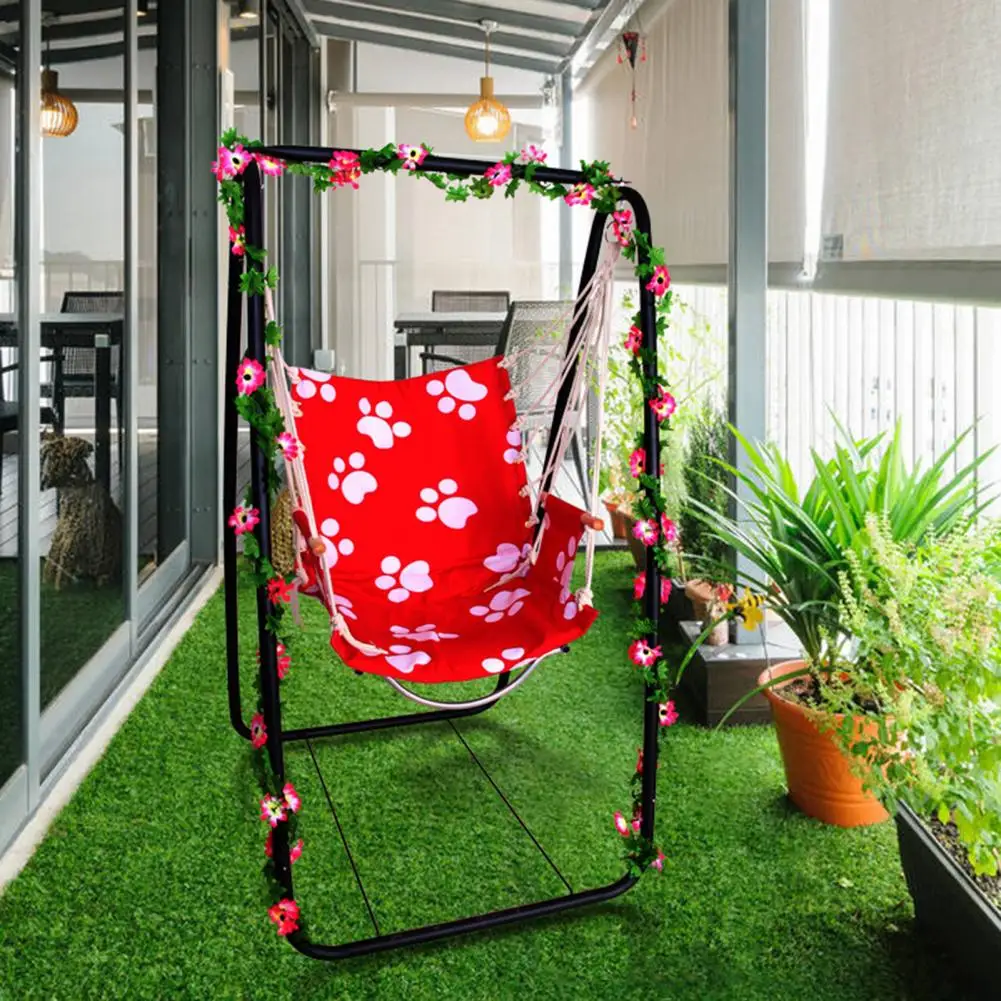
Always leave a generous safety margin below the maximum weight capacity—aim for using only 70-80% of the rated capacity for optimal safety.
Distribute weight evenly across the hammock surface when possible to prevent stress concentration at specific points.
Inspect suspension components regularly, not just the hammock itself. Carabiners, rings, and straps often show wear before the hammock fabric.
Consider capacity reductions in extreme weather conditions—wet materials can be temporarily weaker than dry ones.
Store properly when not in use to maintain material integrity. Keep hammocks dry and out of direct sunlight when stored.
Follow manufacturer care instructions to preserve strength. Some hammocks can be machine washed, while others require hand washing or special care.
Replace aging hammocks even if they show no visible damage. Materials naturally degrade over time, especially those exposed to outdoor elements.
Understanding the difference between single double hammock weight limits can help you choose the right option for your needs. For a stable, weight-rated solution, our A-frame stand hammock sets provide clearly defined capacity limits with the stability of a dedicated stand.
When to Consult a Professional
Certain situations require professional expertise to ensure safety:
- Custom architectural hammock floor installations
- Permanent indoor hammock mounting to ceilings or walls
- Special weight capacity needs exceeding standard products
- Commercial or public use installations
When hiring a professional for these purposes, look for:
– Experience with tensioned structures
– Understanding of load dynamics and structural engineering principles
– Proper insurance and credentials
– Portfolio of similar completed projects
Before hiring, ask questions about their experience with your specific type of installation, how they determine appropriate anchor points, and what safety factors they include in their designs. For architectural hammock floors in particular, working with someone who understands both the aesthetic and structural requirements is essential.
Final Thoughts: Balance Safety and Enjoyment
Understanding and respecting weight limits isn’t about limiting your fun—it’s about ensuring your hammock provides years of safe enjoyment. By selecting a hammock with appropriate weight capacity for your needs, installing it properly, and maintaining it regularly, you create the conditions for worry-free relaxation.
Remember that a quality hammock with adequate weight capacity is a worthwhile investment in both comfort and safety. The peace of mind that comes from knowing your hammock can safely support you allows for true relaxation.
Whether you’re swinging gently in your backyard, camping in the wilderness, or enjoying an architectural hammock floor in your home, responsible use based on proper weight guidelines will keep you hanging happily for years to come.

